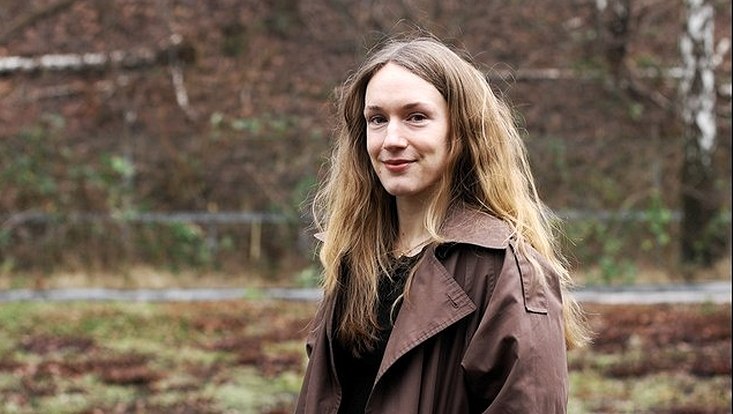Julia Ziegler
26 January 2024

Photo: Monika Wüst
Julia Anabell Ziegler comes from a village south of Hamburg, Germany. She graduated with a Master's degree in December 2022 from Hamburg. Her thesis, titled "Dark matter phenomenology in Z2' broken Two Higgs doublet model with complex singlet extension," focused on investigating Dark Matter (DM) relic density and direct detection cross sections in a Two Higgs doublet model extended by a complex singlet (2HDMS). Currently, she is employed in the research group of Prof. Dr. Gudrid Moortgat-Pick for her PhD, who supervised her master's thesis.
What is the topic of your research?
My topic is related to cosmology. I am looking into curvature perturbations and their imprints on the cosmic microwave background (CMB), together with Sven Ha, Gudrid Moortgat-Pick and Bibhushan Shakya. This is related to the QU H2 group. But I am also still working on a topic related to my master's thesis, so on DM phenomenology in a 2HDMS, where together with Juhi Dutta, Jayita Lahiri, Cheng Li, Gudrid Moortgat-Pick and Sheikh Farah Tabira we are now also looking into signals at future lepton colliders. This is related to the QU DM1 group.
The cosmology project: The project is based on a paper from Bibhushan Shakya, in which he investigated how the tachyonic instability of the Standard Model (SM) Higgs could enhance Higgs particle production during inflation. My aim is to investigate how these Higgs particles (that were produced during inflation) effect the curvature perturbations in the early universe and to estimate the impact of this on the CMB, which we observe today.
The DM project: For this project we investigate a 2HDMS, where the imaginary component of the singlet gives rise to a pseudo-scalar DM candidate. We then investigate how the parameters of the model effect DM observables, such as relic density, direct detection cross section and indirect detection cross section. Another part of our study is to investigate what signals we would observe at future lepton colliders in this model (the 2HDMS).
What fascinates you about your research focus?
I think it is amazing how we can think of what might have happened in the early universe and then do some calculations and compare our results to things we can actually observe today, like the CMB. Also, I am happy to have these two different projects. The cosmology project where we only assume the SM and the DM project where we go beyond the SM and assume a 2HDMS. I like both, since the SM is a great achievement of physics, but I also love to think of what else there could be.
What do you like about the cluster Quantum Universe?
The cluster is great to connect with other PHD students. I love hearing what others work on and like the feeling of somehow being connected even if you do not work together directly. The QU days and lectures are also great to learn about other topics. I think without QU I would have met less people and would know less about what is going on in other fields of physics. Another good thing about the cluster is that you have the opportunity to work on projects with physicists who usually work on other topics than you and that way you can build bridges between different fields of physics.
What do you like to do in your free time?
I am a pretty adventurous person and I love to travel and explore new places and cultures. I also love being in nature and doing sports. But I also love to relax and go for a coffee with my friends and spend time with my family or help my mom in the garden.
On my path to physics, I took a little detour. I always loved physics but could never imagine myself being a physicist. So, after school I did an apprenticeship in wholesale and external trade and worked a bit doing this. But I always missed physics, so I took the plan to quit my job and travel for one year and then start to study. The one year of travelling then turned into two years. But after that I finally started studying physics and am now very happy about this decision.
